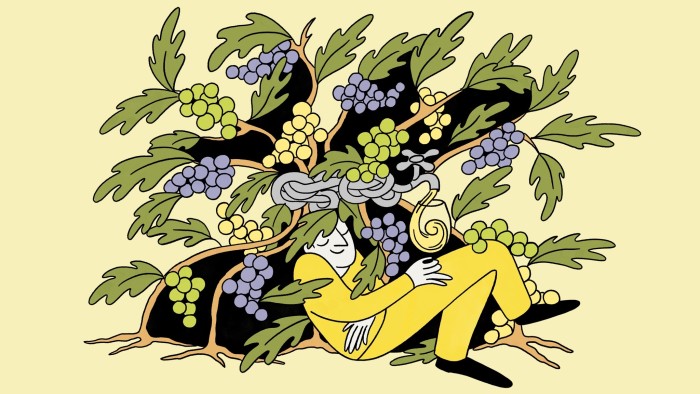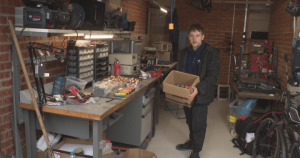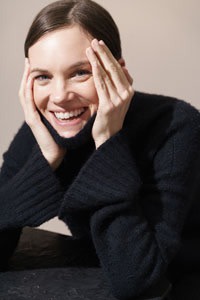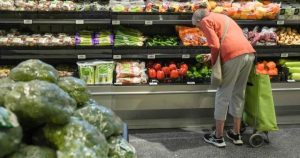Wine experts love Alsace Riesling. Why doesn’t everyone else?

Unlock the Editor’s Digest for free
Roula Khalaf, Editor of the FT, selects her favourite stories in this weekly newsletter.
Those who have passed the notoriously difficult Master of Wine exam almost invariably love the wines of Alsace and its signature grape variety Riesling. But they are in a minority.
Selling wines from the region has become quite a struggle. The tall, thin green bottles they are sold in used to be a staple on French supermarket shelves, but the supermarkets are buying less and less from Alsace. Tourists flock to this devastatingly pretty part of France from Germany, just over the border, as well as Switzerland and Benelux countries, and many producers depended on sales in their tasting rooms. But now even the tourists are buying less.
The big distinction between German and Alsace Rieslings used to be that Alsace Riesling is almost always dry. Perhaps the dramatic increase in the proportion of German Rieslings that are now dry has reduced demand from tourists from across the Rhine.
According to Julien Schaal, a fairly new but ambitious Alsace producer, some growers are giving up bottling their own wine and taking their grapes to the local co-op instead, contrary to the trend in most other French wine regions. He recently converted an old farm shed into a smart new winery and claims that he can pick up all manner of second-hand winemaking equipment for a song.
There are exceptions to Alsace’s wine woes. The two most famous Alsace wine producers, who for years spearheaded the region’s export drive, are Hugel and Trimbach, founded respectively in 1639 and 1626, and still very much family concerns. They make considerable quantities of wine, which can still be found all over the world.
A more recent irreproachable source of fine Alsace wine is the Faller family’s Domaine Weinbach, a parvenu that dates from 1898. It is now run by Catherine Faller and her sons Eddy and Théo.
Théo does the crucial job of maximising quality in the vineyards. Eddy, based in the family manor house, returned to the fold only in 2017 after being a banker in Brazil. He brings a very un-Alsace point of view to what is an extremely conservative wine region and believes its winemakers are “too reverent” towards the organisation that governs France’s appellation system.
Describing new wines designed to combat warmer summers, a co-fermented blend of the rich Pinot Gris with the fresher Pinot Blanc and a blend of warm-climate dark-skinned grapes Syrah and Grenache (neither of them officially permitted in Alsace), Eddy Faller admitted that labelling them according to the rules might not be straightforward. “But having lived and worked in Brazil, I’d rather be fined for not following the rules than feel sorry I didn’t do anything.”
The Pinot Blanc grape that has vied with Riesling as the most-planted variety in the region but has nothing like its réclame, is now used mainly for the local sparkling Crémant d’Alsace, sales of which have recently been the one bright spot on the region’s balance sheet.
But Faller thinks that still Pinot Blanc is due a re-evaluation because its naturally higher acidity is so useful in an era of warmer summers when acidity is at a premium. “We’ll all be making Pinot Gris with 17 per cent alcohol in a few years’ time if we don’t do anything about it.
“And I think you’ll see a lot more co-ferments in future. It’s a great way to deal with global warming. [At Faller] we’re separating ourselves from the single-varietal model.”
One of his complaints about the appellation system is its rigidity on this point: “We’re one of few appellations to insist on the 100 per cent [of the cited] grape rule,” he says. Most other regions allow up to 15 per cent of other grapes to be added to varietally labelled wines.
At a recent celebration of the centenary of Trimbach’s most famous wine, Riesling Clos Ste Hune (arguably my favourite dry white wine anywhere), 12th-generation vintner Jean Trimbach claimed not to be worried about the effect of hotter, drier summers on the super-racy, steely Clos Ste Hune (which takes years to approach drinkability). He admitted that harvests were now two or three weeks earlier than in the past and that alcohol levels have been rising so that 14 and 14.5 per cent were not uncommon today. But he argued that, to counterbalance this, total acidity levels had also been rising because his family’s sites are cooled by the wind that regularly whistles through the gap in the Vosges west of their base in the medieval village of Ribeauvillé.
Change is not something welcomed by the Trimbach family, but even they cannot fight climate change. When showing Clos Ste Hune 1979 (still in great shape, by the way), Jean Trimbach observed that the potential alcohol of the grapes when picked was probably only 11 per cent, but that would probably have been regarded as “great” then, a fine basis for the sugar that used to be routinely added to the fermentation vat to beef up final alcohol levels. It certainly isn’t needed today.
A good 90 per cent of all Alsace wine is white but there is increasing interest in red wine made from the one permitted grape, fashionable Pinot Noir, which can now be ripened fully to provide a better-value alternative to red burgundy. Faller, who instituted single-vineyard bottlings of the fruit of their old Pinot Noir vines in 2017, criticises Alsace producers who try to shift their white wine by insisting on deals where any Pinot Noir order must also include many more bottles of white.
Convinced that demand is always cyclical, he sees that as devaluing Alsace’s greatest asset — stunning dry Rieslings.
Truly fine dry Alsace Rieslings
All but the Charles Frey wine are grown in Grand Cru sites.
Those outside the UK should look out for the wines of Julien Schaal and Muré among others.
Stunning mature Clos Ste Hune vintages available in the UK are 2015, the gorgeous 2012, 2009 and the famous 1990 — at a price.
• Cave Vinicole de Hunawihr, Rosacker 2021 (13%)
£22 Tim Syrad Wines
• Charles Frey, Granite 2020 (12.5%)
£23 Must and Lees
• André Kientzler, Geisberg 2019 (14%)
£42.82 Flint Wines
• Dom Weinbach, Cuvée Colette 2021 (13.5%)
£44.40 Justerini & Brooks
• Kirrenbourg, Schlossberg 2019 (13.5%)
£324 for six bottles Christopher Keiller
• Dom Weinbach, Schlossberg 2020 (13.5%)
£68.40 Justerini & Brooks
• Trimbach, Riesling Geisberg 2018 (14.5%)
£71.03 Great Wines Direct, £75 Hedonism, £81 Millésima
• Zind-Humbrecht, Clos Windsbuhl 2021 (12.7%)
£74 The Sourcing Table
• Hugel, Schoelhammer 2009 (13.5%)
£508 for six bottles in bond Grand Vin Wine Merchants
Tasting notes, scores and suggested drink dates on Purple Pages of JancisRobinson.com. International stockists on Wine-searcher.com
Follow @FTMag to find out about our latest stories first and subscribe to our podcast Life and Art wherever you listen
#Wine #experts #love #Alsace #Riesling #doesnt




